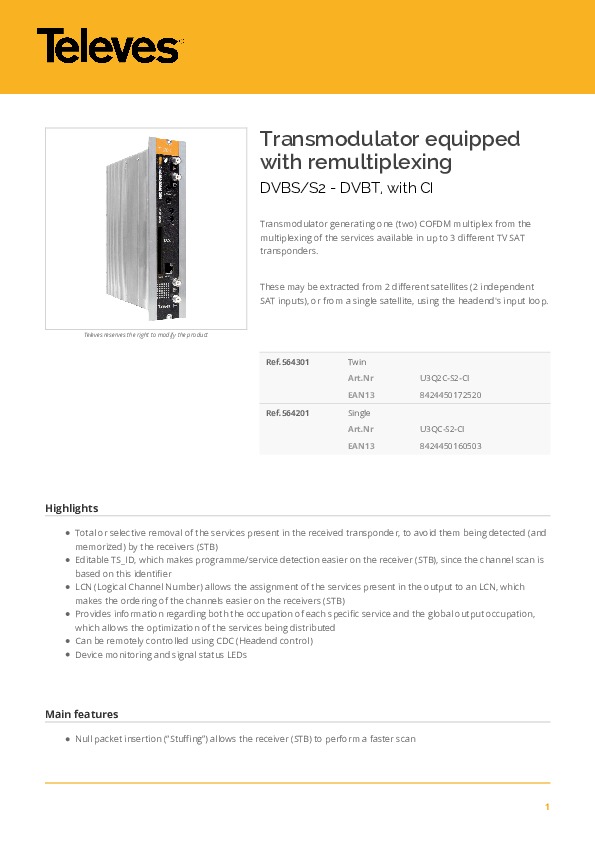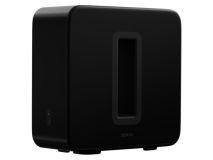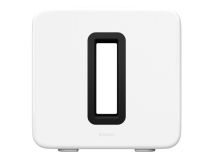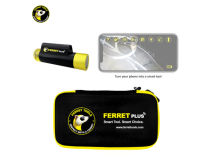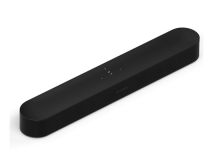Total or selective removal of the services present in the received transponder, to avoid them being detected (and memorized) by the receivers (STB)
Editable TS_ID, which makes programme/service detection easier on the receiver (STB), since the channel scan is based on this identifier
LCN (Logical Channel Number) allows the assignment of the services present in the output to an LCN, which makes the ordering of the channels easier on the receivers (STB)
Provides information regarding both the occupation of each specific service and the global output occupation, which allows the optimization of the services being distributed
Can be remotely controlled using CDC (Headend control)
Device monitoring and signal status LEDs
Main features:
- Null packet insertion (“Stuffing”) allows the receiver (STB) to perform a faster scan
- PID filtering allows the removal of undesired services from a Multiplex (enhanced occupation use); very interesting when combined with CAM use
- S_ID editable to prevent the receivers (STB) in an installation from retuning when the output-Multiplex's services are modified
- Editable Network_ID, Original Network_ID and Cell_ID allow the control of network identifiers
- The encrypted satellite channels are transformed into free DTT services through the CI interface and the appropriate CAM module. Depending on the CAM type used (standard/professional), one or several services may be opened for free visualization

